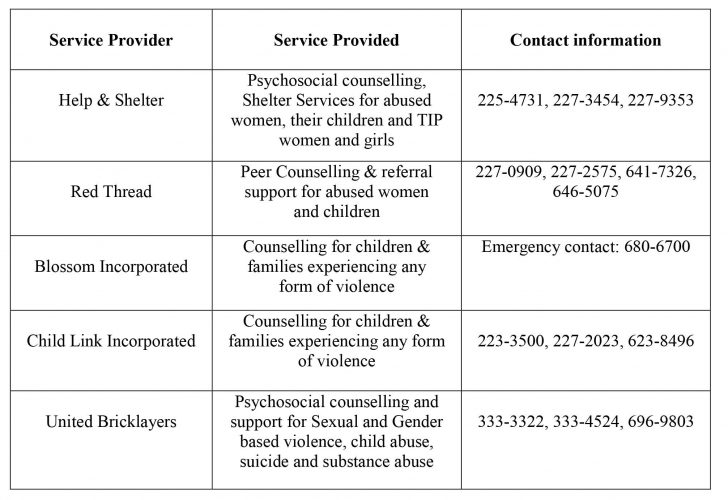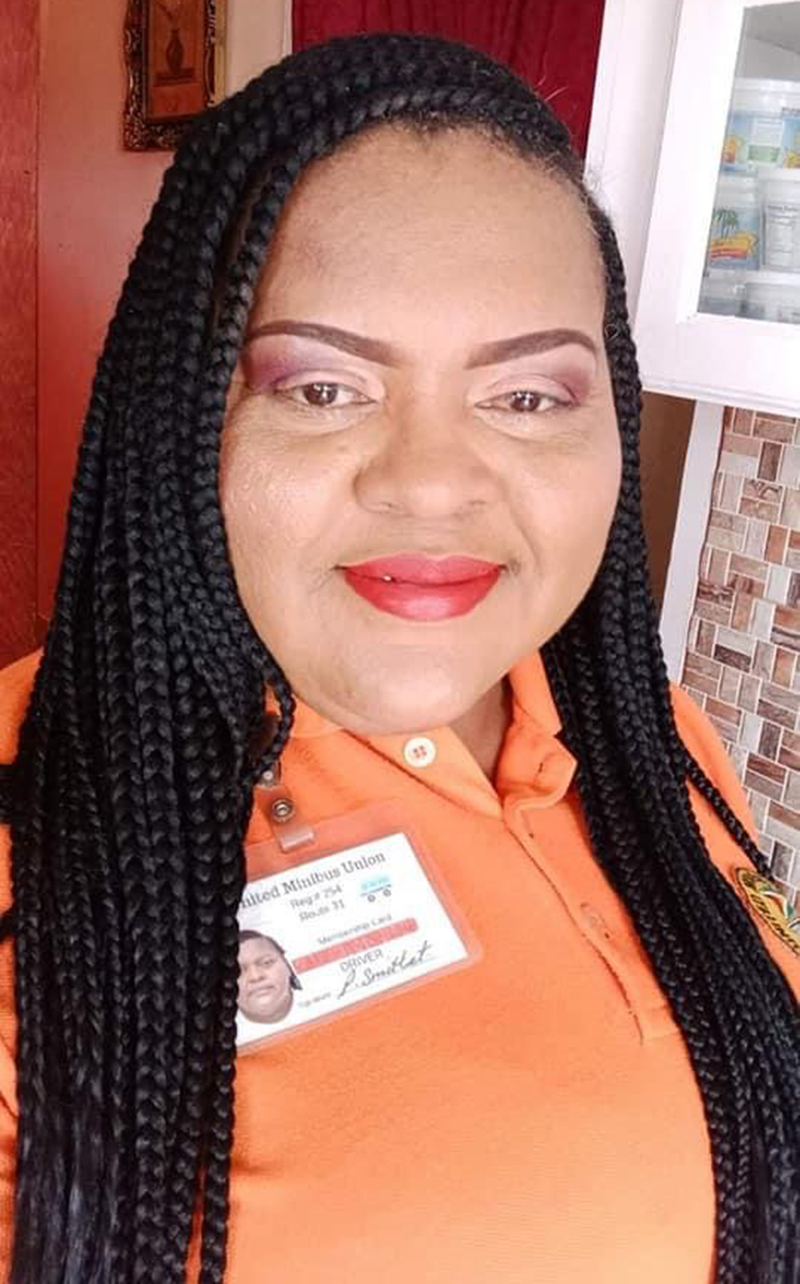After her own escape from years of domestic violence, during which she felt like a prisoner in her own home, Patricia Smithet says shelter services are needed across the country to help women who have nowhere to go after reporting incidents of abuse.
In an interview with Stabroek Weekend, Smithet, a 46-year-old mother of four recalled her own attempts to get away from her abuser and she felt hopeless after making reports to the police station since she had no alternative but to return home to face her abuser and continued acts of violence.
“If they’re to curb domestic violence, they have to get a walk-in centre for women like me. At the [police] station, there must be somebody there to take you into this centre. That’s the only way because when you make this report you have to go back home and the abuse is worse. When I go back home my clothes were burnt. It didn’t get better, it got worse. He was arrested several times but he was a police who had friends. When the matter [was] called in court, I used to say, ‘I don’t wish to continue,’ out of fear. I was asked if I’m being threatened and I would say, ‘No, Your Honour.’ The police do their job but the government is what is failing us because when the abusers are charged they just come back home.”

“After I realised I wasn’t getting any help, I made up my mind to stay. I couldn’t come out the house to go and look for work. If I go at my brother or sister, he thinks I would go and tell them what I went through. I didn’t have any friends because he caused trouble with all of my friends. I was isolated,” she said. “I ended up like a prisoner in my own home. When the children go to school, I used to be abused. When they’re at home, he acts like he is innocent. But they did witness the abuse. He would put a lock on the back and front doors so I couldn’t go outside. That way when he leaves and comes back, I’m inside the house. Sometimes if I get to go out he would hide and lie down on the roadside to see where I’m coming from and its one big story, cutlass passing, [he] sliced my ears”
Smithet said she considered ending her own but she ended up making the decision to start looking at the abuse differently. “One time I got away and went to Barbados and he threatened to murder one of [my children]. I knew what he was capable of so I jumped on the plane and returned. I returned and stopped talking about it. I said there is no way out and the only way would be if I kill myself. I sat down on the toilet… then I said this is a sign of weakness… and I took the poison I had in the cup and threw it in the toilet,” she recounted.
The woman said having felt guilty about coming so close to taking her own life, she made a promise to her children that when they were finished writing CXC she would move on and try to create a better life for them.
Smithet recalled once driving with their one-year-old child when her abuser drove into the vehicle, blocked their path and demanded that she get out while making threats. “He told me to step out the bus, with an icepick at my throat. Not one person came to my rescue. When I reached home, my daughter begged him to leave me alone. I eventually ran into the house and locked the door.”
Looking back, she regrets that her children were exposed to the abuse. She says her second daughter used to tell her to sit on the veranda in the afternoons because of the fear that she might step into the house and find her dead.
The survivor is now encouraging women in abusive relationships to empower themselves with skills that would give them independence. She believes that her inability to get out sooner had to do with her dependence on her abuser for financial support.
‘Walking away’
For her, the abuse ended around 2010, when her then partner announced that he had met someone new. “He came home one day and said ‘I met this woman, she is so much better than you.’ I knew then that the abuse would stop because every time he meets someone it’s like I’m the worst thing he ever saw. I would be sitting in the chair and he would pelt me with something.”
But it was not a smooth transition for Smithet as the abuser later returned and attempted to move back into the house but she rejected his demands. She said there was a violent altercation which eventually saw him “leaving for good.” “I said, ‘For 12 years I’ve been taking this from you and today is the last day that you will ever come around me or hit me.’ I fought back. But it didn’t end; he came back demanding the bed, stove, refrigerator and other things in the house.”
Walking away from the abusive relationship was not easy for Smithet as her abuser resorted to stalking. Given her experience, she is encouraging women to change their routines as a way of avoiding such encounters.
Despite getting a restraining order, Smithet says she still lives in fear. “I don’t think I’ve moved past it. That’s something that lives within me. I still feel fearful that he might attack someday. As women and mothers, we should empower our daughters, make them independent. If I was independent I would have had my own money to do things like rent an apartment and move on,” she said.
When asked how she feels about her name and face being published along with her story, Smithet said she is not afraid to openly share her experience. She says people need to know that there are faces attached to domestic violence and if they refuse to speak out about the issue it will not be given the attention it needs. “We have to stop hiding in the dark when abuse is real. When you’re telling your story you have to put your name because if everybody come out and talk their story, domestic violence would end. What I would tell other women is that I have survived by the grace of god. I fought back. I eventually went to get a licence and started driving. Now, I’m happy and free.”
Smithet believes there are many women who still have difficulties removing themselves from abusive homes due to not having an alternative option. “If the Human Services Ministry wants to help women like me the first thing they have to do is put systems in place. Like how I living in Dairy, put a women empowerment centre in here; it is closer to home. You can walk and go there. You can have a meeting point, so if somebody is being abused, this is how we can handle it in the community. You can have women empowerment centres where you can go and learn something and discuss issues with other women. The next thing you have to have is a safe space for mothers and children. At the station you can assess the individual and send them there,” she said.
According to the United Nations (UN), gender-based violence is the most pervasive yet least visible human rights violation in the world. It includes physical, sexual, mental or economic harm inflicted on a person because of socially ascribed power imbalances between males and females. It also includes the threat of violence, coercion and deprivation of liberty, whether in public or private.
Back in October 2020, the Guyana Government in collaboration with the European Union (EU) and the UN launched a spotlight initiative aimed at eliminating violence against women and girls. This programme entails community-level interventions in regions one, four, six and seven over a three year period.
Other interventions to empower women include the Ministry of Human Services and Social Security’s Women’s Innovation and Investment Network (WIIN), which was launched in May 2021, to train women and girls to become financially independent.
Almost a year ago, the Ministry also launched its toll-free 914 emergency hotline for persons to call and report instances of domestic and sexual violence. (Onicka Jones)






